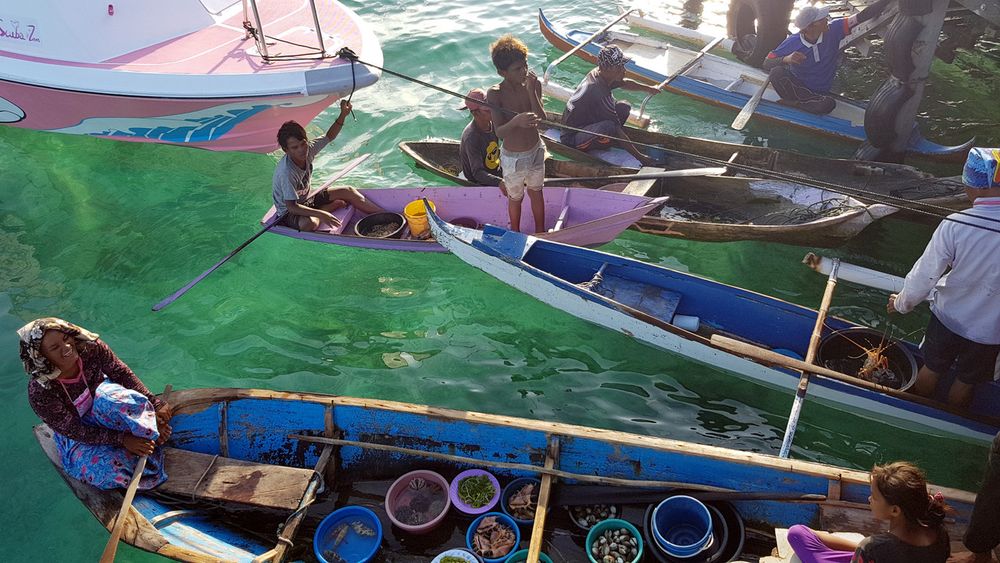SEMPORNA, Feb 10 — Semporna in Sabah has gained popularity as the gateway to world-famous diving destinations, but one must not discount the Bajau Laut (sea gypsies) who have made it an attraction in their unique way.
Living off wooden boathouses or huts built on stilts atop coral reefs around the islands off Semporna, such as Mabul, Boheydulang, Sibuan, Maiga, Mantabuan, Selakan, Tatagan and Omadal, the nomadic and seafaring Bajau Laut have become a part of the Semporna landscape.
One cannot miss seeing them sell their wares – live lobsters, crabs, fish, clams, mussels and a variety of seashells – to the large number of tourists who frequent this city and the islands.
For the uninitiated, the islands of Boheydulang, Selakan, Sibuan and Mantabuan are part of the Tun Sakaran Marine Park, also known as the Semporna Islands Park, gazetted in 2004 as Sabah’s seventh park.
This Bernama correspondent from Labuan had the opportunity to talk to the sea gypsies as a guest at a Chinese New Year celebration for Chinese tourists on Feb 4 on Mabul Island which draws a steady stream of domestic and foreign tourists annually.
The once illiterate and socially reclusive Bajau Laut are coping with the modernity encroaching into their lives. They have overcome their shyness of speaking to people outside their community and can also converse in English and Chinese dialects, which come in useful when selling their sea produce.
They picked up the languages while doing what they do best – selling the sea produce from their four-to- five-feet-long hand-made wooden boats.
“When we meet Chinese and English-speaking tourists in Mabul, we learn the words they use to enquire and bargain, and keep practising saying these words. We use them when we meet other tourists,” said a 40-year-old gypsy who only wished to be known as Otok.
The sea gypsies usually speak a very basic level of the languages they have learned, usually enough to bargain and sell.
The Bajau Laut have been living in the open sea on their wooden boathouses or stilt huts built atop coral reefs. Some do so even to this day although in recent years they have begun building settlements in the coastal areas, with their houses built on stilts.
The sea is still their main source of living – fishing, collecting clams and mussels, and even pearl farming in the remote islands, and they still retain their gypsy lifestyle.
The Bajau Laut living around Semporna number around 3000. They celebrate a popular annual festival called Regatta Lepa with their unique customs and traditions. Their boats are called lepa.
A 2010 study by Universiti Malaysia Sabah found that the sea gypsies rarely, if ever, set foot on land.
When they do spend the occasional night or two on solid ground, they often report feeling “landsick”.
Preferring the sea, they would only go ashore for business and this may include selling their catch, collecting fresh water for drinking and wood. Most would return to their boats by nightfall.
The sea gypsies are exceptional free divers, with many of them having mastered the art of free diving to depths of 20 metres and more while holding their breath for minutes at a time to hunt fish, lobsters, sea cucumbers (trepang) and other marine life.
Following in the footsteps of their ancestors, they earn their living based solely on the ocean’s resources.
Apart from being excellent at fishing and diving, they are also skilled at constructing pile houses and their lepa boats which resemble the modern-day catamarans, with two adjoining legs for added stability when negotiating through the rough and wild Pacific Ocean.
In the evenings, one can see dozens of these lepa boats coming home with their day’s catch. As such, the cultural experience of Regatta Lepa is certainly not to be missed when one visits Semporna.
The plight of the sea gypsies has remained largely unchanged as they have always been, and still are, stateless people, despite the Sabah government’s efforts to look into their citizenship status.
Most Bajau Laut children do not have access to formal education as they do not meet the requirement for pupils to have birth certificates and for the parents to possess the national identity card. — Bernama



















